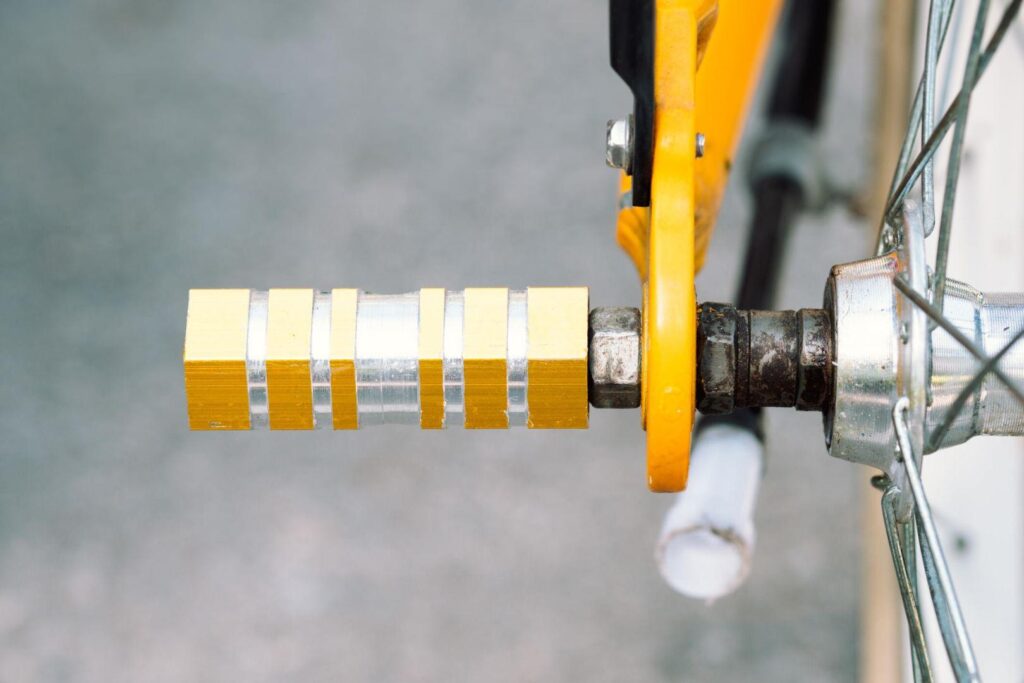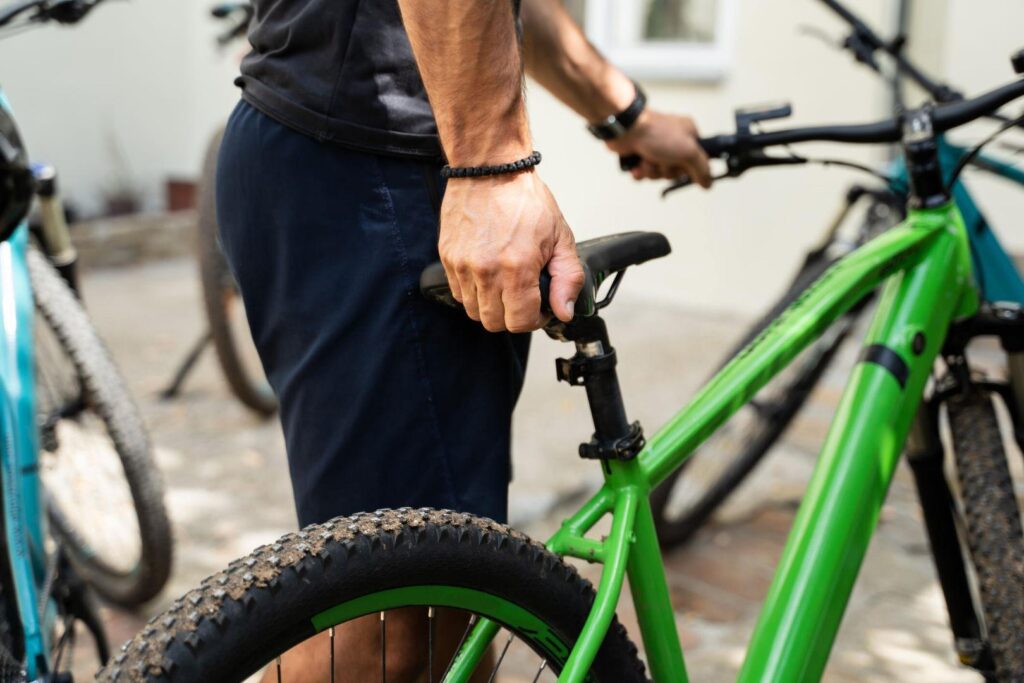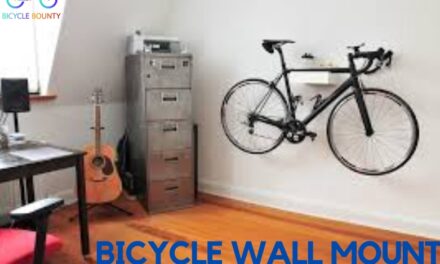Bicycle pegs are an essential accessory for BMX and stunt bikes, transforming ordinary bicycles into versatile machines capable of tricks and added functionality. Mounted on the front and/or rear wheel axles, these sturdy cylinders extend horizontally to provide a platform for various purposes.
Constructed from durable materials such as steel, aluminum, or even reinforced plastic, bicycle pegs are designed to withstand significant weight and impact. This durability is crucial for riders who engage in freestyle BMX, allowing them to perform jumps, grinds, and other tricks by offering additional foot space or leveraging points.
Table of Contents
Beyond the realm of stunts, pegs are also utilized for more practical reasons. They can serve as a mount point for carrying an extra passenger, as the pegs act as footrests, enhancing the bike’s utility. Additionally, when it comes to maintenance, pegs can elevate the bike off the ground, making tire changes and chain repairs more accessible by stabilizing the bike in a fixed position.
Choosing the right pegs involves considering the material, size, and type of riding you intend to pursue. Weight is a factor; heavier pegs provide more stability for tricks, while lighter ones may benefit riders looking for speed and agility. Installation is typically straightforward, but compatibility with your bike’s axle size is key.
Bicycle pegs: Types, Uses and Benefits
In this guide, we’ll delve into the world of bicycle pegs, exploring their types, uses, and benefits, to help you find the perfect peg for your cycling needs.
Types of Bicycle Pegs
Standard Pegs
Standard pegs are the most common type, designed for general-purpose use. They typically feature a simple design, with a metal or plastic construction, and are suitable for most bike pegs types. Standard pegs are ideal for cyclists who need a basic storage solution.

Folding Pegs
Folding pegs are perfect for small spaces and easy storage. They can be folded and tucked away when not in use, making them ideal for apartments, condos, or travel. Folding pegs are great for cyclists who need a compact storage solution.
Adjustable Pegs
Adjustable pegs offer versatility, allowing you to customize the height and angle to suit your bike and storage needs. They are perfect for cyclists with multiple bikes or varying storage requirements.
Locking Pegs
Locking pegs provide added security, featuring a built-in lock or compatible with a separate locking mechanism. They are ideal for cyclists who need extra protection against theft or tampering.
Wall-Mounted Pegs
Wall-mounted pegs are designed for permanent installation, offering a sturdy and space-efficient storage solution. They are perfect for cyclists who want a secure and long-term storage solution.
Steel Pegs:
Known for their durability and strength, steel pegs are favored by riders who engage in extreme stunts and need a reliable material that can endure the stress of landing heavy tricks.
Aluminum Pegs:
These are lighter than steel pegs and are preferred by riders who require agility along with moderate strength. They are suitable for both street and park riding but might not withstand the same level of abuse as steel pegs.
Plastic Pegs:
Often coated over a metal core, plastic pegs are the lightest option and are less harsh on surfaces, making them ideal for indoor parks or riders who are conscious about not damaging rails and ledges.
Titanium Pegs:
As a premium option, titanium pegs offer the best strength-to-weight ratio but come at a higher price point. They are perfect for professional riders who need top-tier equipment.
Uses of Bicycle Pegs
Tricks and Stunts:
The primary use of pegs in BMX and stunt cycling is to perform tricks like grinds and stalls. Pegs allow riders to slide along rails and ledges or balance on various surfaces.
Extra Passenger:
Particularly in casual contexts, pegs can be used to carry an extra passenger. While not the primary design intention, this is a common use in many cultures.
Bicycle Repairs:
Pegs can elevate the bicycle off the ground, making it easier to perform maintenance tasks such as chain oiling or tire changing without the need for additional stands.
Bike pegs Storage
Pegs keep your bike off the floor, reducing clutter and tripping hazards. They are ideal for storing bikes in garages, basements, or apartments.
Bike Security
Pegs can be used with locks to prevent theft and tampering. They provide a secure anchor point for your bike.
Bike Display
Pegs can showcase your bike, making a stylish addition to your home or garage. They are perfect for cyclists who want to display their bike proudly.

Benefits of Bicycle Pegs
Enhanced Bike Control:
During stunts and tricks, pegs provide additional points of contact, offering riders better control and balance.
Increased Versatility:
With pegs, a bicycle can easily be transformed into a more versatile vehicle that’s not only for riding but also for performing or carrying an additional passenger.
Aid in Learning New Tricks:
For newcomers to BMX or stunt riding, pegs offer a forgiving platform to learn new tricks and improve their riding techniques in a safer manner.
Utility in Repairs:
For the everyday rider, having pegs can simplify the process of performing routine maintenance, eliminating the need for additional tools or stands.
Space-Saving
Pegs maximize storage space, ideal for small areas. They help keep your garage, basement, or apartment clutter-free.
Easy Access
Pegs allow for quick and easy access to your bike. They make it simple to grab your bike and go.
Protection
Pegs keep your bike off the floor, reducing damage and scratches. They protect your bike from moisture, dust, and other environmental elements.
Customization
Adjustable pegs cater to various bike types and storage needs. They offer a customizable storage solution.
Style
Pegs come in various designs and materials, adding a touch of style to your home or garage. They are available in different colors, shapes, and sizes to match your decor.
Installation and Maintenance Tips
Installing Bicycle Pegs:
To install bicycle pegs, first, ensure that your bike’s axles can accommodate pegs. Some BMX bikes come pre-equipped with longer axles to facilitate peg installation. Typically, the installation involves removing the wheel’s axle nuts, sliding the pegs onto the axles, and then re-securing the nuts. Make sure the pegs are tightly secured to prevent them from loosening during rides.
Choose the right location: Select a sturdy wall or suitable surface.
Follow manufacturer instructions: Ensure proper installation and assembly.
Use appropriate tools: Drill, level, and screws or anchors suitable for your wall type.
Maintenance:
Regular inspections should be part of the maintenance routine. Check for any signs of wear, such as cracks or severe scratches, especially after performing tricks. Ensure that pegs are always tightly fastened, as loose pegs can lead to accidents.
Tips and Considerations
- Measure your bike: Ensure the peg is compatible with your bike’s size and type.
- Consider your storage needs: Choose a peg that suits your storage requirements.
- Check the weight capacity: Ensure the peg can support your bike’s weight.
- Look for durability: Choose a peg made from high-quality materials.
- Read reviews: Research and read reviews to find the best peg for your needs.
Conclusion
Bicycle pegs offer a convenient and secure way to store and transport bikes. By understanding the types, uses, and benefits, you can find the perfect peg for your cycling needs. Remember to consider your bike pegs type, storage space, and security requirements when selecting a peg. With the right peg, you can keep your bike safe, organized, and easily accessible. Happy cycling!










